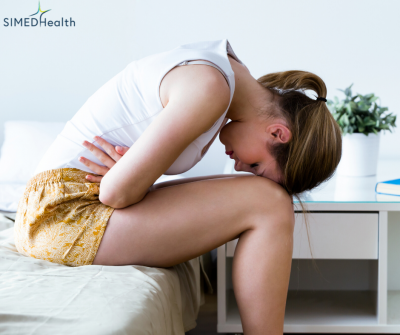
Endometriosis affects about 1 in 10 women during their reproductive years. March is Endometriosis Awareness Month, and we discussed endometriosis and possible complications with SIMEDHealth gynecologist Oscar Osorio, MD.
1. What is Endometriosis?
“Endometriosis is a chronic condition seen in women where endometrial tissue, normally found lining the inside of the uterus, is found in places outside of the uterus. The abnormal tissue growths can occur on the fallopian tubes, ovaries, intestines, or any surface inside the abdomen,” says Dr. Osorio. “Just like the lining inside the uterus, during menstruation, the endometrial tissue growing outside the uterus becomes inflamed and can cause pain.”
Symptoms for endometriosis include painful periods, heavy periods, pain during or after sexual intercourse, lower back pain, abdominal pain, and bad cramping around menstruation. Some women don’t have any symptoms, yet endometriosis can affect fertility, so it is essential to see your gynecologist regularly so they can monitor for any signs or changes.
2. What are the possible causes of endometriosis?
“The actual cause is unknown, but there are several theories. One of the most widely accepted theory is there is retrograde menstruation, which is when the menstrual blood flows back through the fallopian tubes into the pelvic cavity. This then results in endometrial tissue implants developing outside the uterus,” says Dr. Osorio.
3. Why is endometriosis hard to diagnose?
“Endometriosis may be easily suspected, but it cannot be easily seen on x-ray, ultrasound, or other imaging studies,” said Dr. Osorio. “It needs to be seen directly to be diagnosed. This can be done by laparoscopy, which is a minor surgical procedure.”
4. What are some complications people will endometriosis may experience?
Dr. Osorio explains, “Endometriosis may potentially cause infertility, damage to some organs, and debilitating pain if not managed properly.” According to the Mayo Clinic, about 30-40% of women with endometriosis have issues getting pregnant. “Dealing with a chronic condition can also cause depression, anxiety, or other mental health conditions.”
5. What are the treatment options?
“The first line of treatment or initial treatment is usually hormonal regulation with birth control pills or other similar hormonal medications,” Dr. Osorio reports. These can help regulate the menstrual cycle, which often lessens the pain. There are other types of medications for chronic use that may be used. These are used in short, repeating courses. Surgical intervention with excision of lesions, removal of cysts, and excision of scar related adhesions may be required. Ultimately in patients with no response to treatment, full hysterectomy with removal of ovaries may be needed.”
Click here to schedule an appointment with Dr. Osorio or one of our other qualified gynecologists.